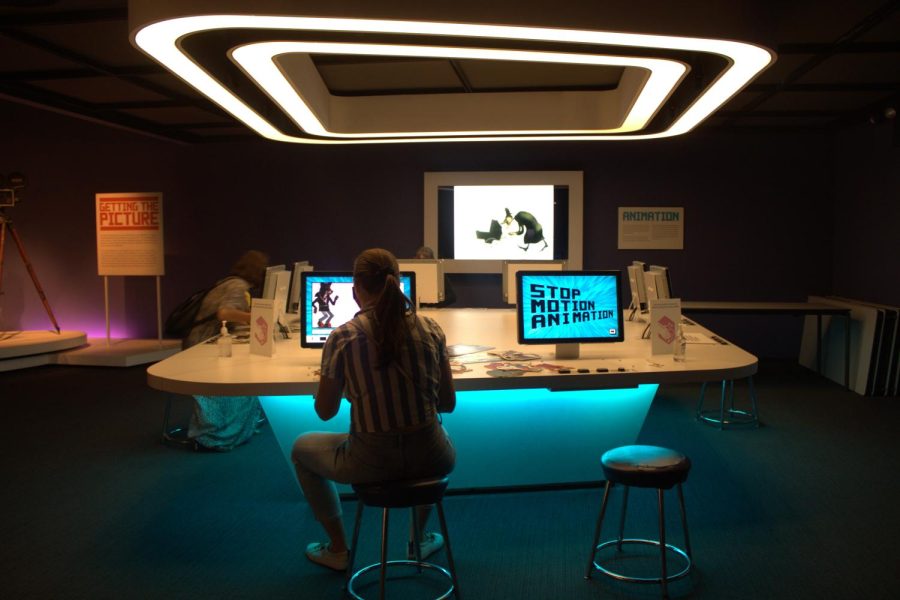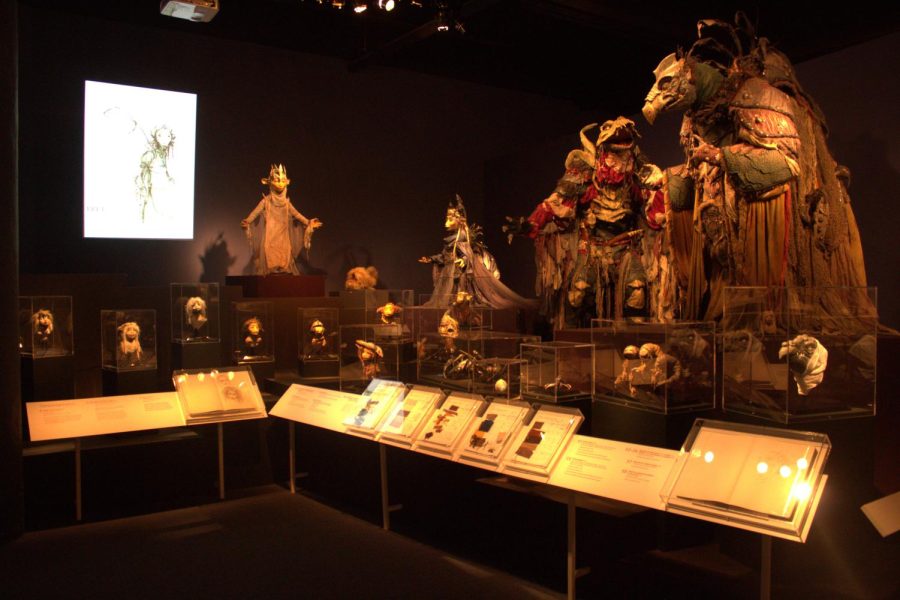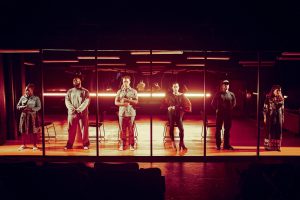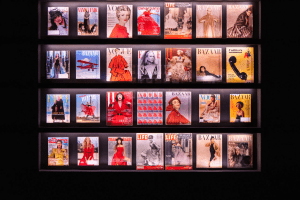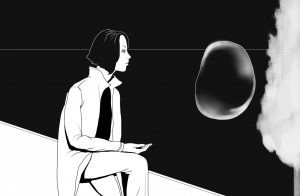Museum of the Moving Image Features Exhibits on Famous Films
The museum provides a closer look into the history of motion pictures, using memorabilia, visual components and fun facts
Right off the N train’s 36th Ave. station, the Museum of the Moving Image is the perfect place to learn more about the art of motion pictures.
October 19, 2021
Movie junkies, Muppets fanatics and Stanley Kubrick stans: this museum is for you.
The Museum of the Moving Image — located in Astoria at 36-01 35th Ave.— focuses on the history of motion pictures. Adjacent to Kaufman Studios, it houses about 130,000 artifacts dating from the beginning of film history to current times.
Upon entry, you are greeted by the all-white Hearst Lobby, which contains the ticket booth, the gift shop and the Redstone Theater for film screenings and expositions. As you ascend the stairs, you are transported into the world of cinema, surrounded by short films displayed on big screens, artifacts from the beginning of cinema history to modern times, and walls filled with merchandise from cult classics.
Some of the prominent exhibitions at the museum include “The Jim Henson Exhibit,” “Envisioning 2001: Stanley Kubrick’s Space Odyssey” and “Behind the Screen.”
The Jim Henson Exhibit
“The Jim Henson Exhibit” showcases a variety of his works, focusing on his impact on American television and the art of puppeteering.
As you enter the exhibit, you are welcomed by a bright orange wall with LED screens showing a montage of Henson’s work. Following the history of Henson’s life, it starts with the early 1950s, focusing on the beginnings of Kermit the Frog and his first appearances on the 1955-1961 sketch comedy series “Sam and Friends.” It is surrounded by black and white clips of the show, vintage advertisements of Wilkins Instant Coffee (the first feature of early Muppet characters), and even a 1963 model of Kermit, back when he was considered a lizard and before he sported a triangle collar.
It then dives into the 1970s, with the creation of “The Muppet Show,” a sketch comedy show that ran from 1976-1981, which not only solidified Henson’s career but also turned Kermit into a household name. It contains various display cases filled with Muppet characters featured in the show and its subsequent movies (such as Miss Piggy in her wedding dress from the film “The Muppets Take Manhattan”), top-secret folders depicting ideas for the show, and sheets filled with character designs.
The exhibit also focuses on his company’s involvement in the puppet design for “Sesame Street.” With the show running for over 50 years, this portion of the exhibit displays a brief history of the show, such as memorable scenes, children’s books with videos displaying the contents of it, toys useful for childhood development, and puppets of characters such as Cookie Monster, Elmo, Prairie Dawn, and an 8-foot-2 Big Bird that towers over the other Muppets.
Envisioning 2001: Stanley Kubrick’s Space Odyssey
“Envisioning 2001: Stanley Kubrick’s Space Odyssey” — which will run until Oct. 17 — explores the creation of the 1968 film “2001: A Space Odyssey.” Considered one of the greatest films of all time by film critic Roger Ebert, the exhibition highlights all the components that make the movie memorable.
Located on the third floor of the museum, you are greeted by various quotes from film directors to authors, and even famous Beatle John Lennon. Right below it is a table which contains a book where you can write about your thoughts on the film. Continuing forward, the exhibit displays a dark blue and grey color palette on the walls mixing in with the scenery of the pioneering film emitting an out-of-this-world vibe. Looking up, a model of the Discovery One spaceship is hung from the ceiling, as if it was flying through space.
The exhibition is filled with behind-the-scenes photographs featuring the cast and crew and the space-age set design, a variety of posters filled with bold fonts in eye-catching colors and paintings of astronauts on the moon and satellites circling around planets, costumes on display such as the iconic orange spacesuit worn by protagonist Dr. Dave Bowman, and storyboards depicting shot by shot of certain scenes.
The exhibit is clad with movie posters, bright neon lights and large billboard signs that make you feel like you’re walking through Hollywood.
Behind the Screen
“Behind the Screen,” separated between the second and third floor, displays all aspects of the action behind the camera, such as hair and makeup, set models, and even various equipment from different time periods.
Within the second floor, the exhibit is clad with movie posters, bright neon lights and large billboard signs that make you feel like you’re walking through Hollywood. It contains a retro 1980s living room set, a hallway filled with machines from the late 60s and early 70s that led to the beginning of arcade and video games, and Tut’s Fever Movie Palace, a mini movie theater and art installation based on the elaborate theaters of the 1920s, then called picture palaces.
The immersive exhibition on the third floor showcases various interactive motion picture-making and viewing experiences. You first encounter two mutoscopes — one displaying the Charlie Chaplin film “Hell’s Kitchen” and the other displaying Hoot Gibson’s “Galloping Fury.” Dated from the late 1800s to the early 1900s, it displays images in a flipbook style.
The room then features a luminescent round table filled with iMacs where you can make your own stop-motion animated films, a recording booth sealed with soundproof walls where you can rerecord dialogues for preexisting film scenes such as “Wizard of Oz,” and a wall with various screens displaying a live sports broadcast being edited.
Due to COVID-19, the museum is open Friday through Sunday with tickets for hourly reservations being sold at $15 for adults and $11 for students with a valid ID. It is open on Friday from 2 p.m. to 8 p.m. and on Saturday and Sunday from 12 p.m. to 6 p.m.
Right off the N train’s 36th Ave. station, the Museum of the Moving Image is the perfect place to learn more about the art of motion pictures. As you walk through its galleries, you learn what it is like to be behind the camera, in front of the camera and in post-production.

